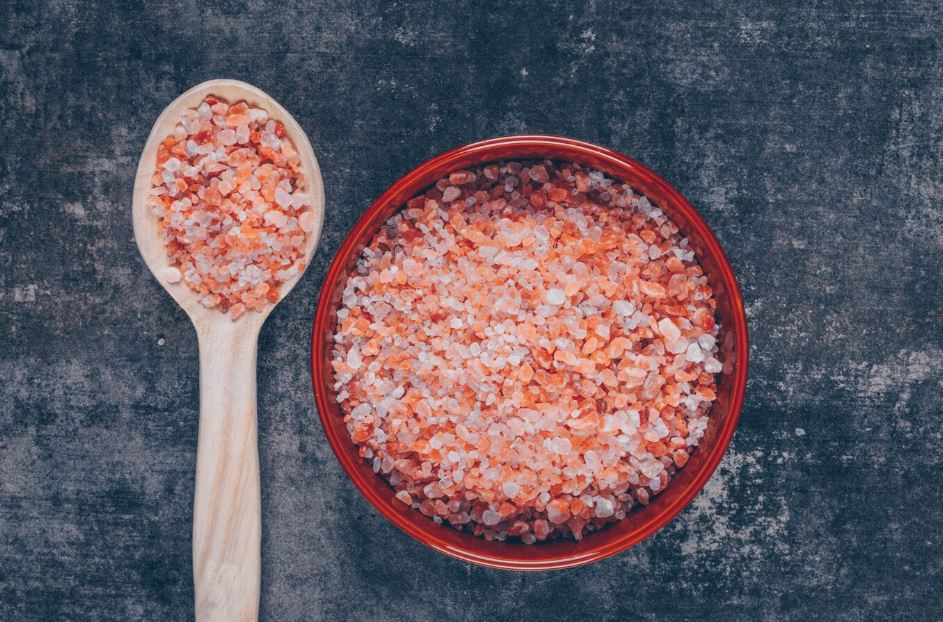
Himalayan pink salt has become incredibly popular in recent months as a purported weight loss aid. The trend has been significantly accelerated by fitness creators, health influencers, and viral TikTok videos, with thousands of people applauding what has been called the “pink salt trick.” Although the basic idea seems so straightforward, its potential seems almost too good to be true. Drink it every morning on an empty stomach after adding a tiny pinch of pink salt, lemon juice, and honey, if desired. Proponents assert that it increases energy, lessens bloating, and even encourages fat burning. But can substantial weight loss be supported by a mineral-rich rock from the foothills of the Himalayas?
The benefits are tenuous at best from a scientific standpoint. Experts, such as endocrinologists and registered dietitians, have emphasized time and again that this salty mixture has no direct metabolic effect. The practice does, however, promote morning hydration, which is especially advantageous in and of itself. This is perhaps surprisingly effective. Drinking water first thing in the morning can help with digestion, cut down on pointless snacking, and increase feelings of fullness throughout the morning.
Himalayan Salt and Weight Loss Use
| Name | Himalayan Pink Salt |
|---|---|
| Primary Use | Culinary seasoning, mineral bath, hydration aid |
| Popular Diet Trend | Mixed with water for weight loss “detox” ritual |
| Common Recipe | 8 oz water + pinch of salt + lemon + honey |
| Key Minerals | Sodium, trace magnesium, calcium, potassium |
| Health Claims | Boosts metabolism, improves digestion, reduces bloat |
| Scientific Support | Lacking for weight loss claims |
| Caution For | Individuals with hypertension, kidney or heart issues |
| Best Use Case | Occasional hydration for active individuals |
| First Viral Appearance | TikTok and wellness blogs, early 2020s |
Many wellness fads in recent years have taken their cues from traditional methods or natural cures. Pink Himalayan salt, which is frequently promoted as “mineral-rich” and “alkalizing,” became popular, particularly when self-care practices increased due to pandemic-era wellness content. However, in terms of sodium content, Himalayan salt is not essentially different from table salt, despite the romantic claims associated with its blush-toned crystals. For people with high blood pressure or kidney disease, where too much sodium is strictly discouraged, this makes the trend potentially dangerous.
Nevertheless, the pink salt trick has become symbolic. The ritual is more important than the salt. One behavioral pattern that can affect the remainder of the day is the practice of getting up, making a drink, and eating something homemade first thing in the morning. Some see it as a mental reset, the beginning of making healthy decisions. Indirect effects like eating a lighter breakfast or drinking more water throughout the day can result from this alone.
The pink salt beverage has been promoted on social media in conjunction with other “morning jumpstart” techniques like green tea, lemon water, or apple cider vinegar shots. Even though these fads are based on incomplete facts, they frequently overstate how effective they are at helping people lose weight. Usually, these tendencies result in behavioral conditioning. A structured morning routine increases the likelihood that people will make healthy choices throughout the day. The pink salt trick has thus established a niche.
To put things in perspective, it’s useful to know what nutritional benefits pink Himalayan salt truly provides. Indeed, trace amounts of minerals like calcium, potassium, and magnesium are present, but they are present in such small amounts that they have little effect on your electrolyte balance. Products like electrolyte tablets or rehydration solutions are far more accurate and effective at promoting hydration during prolonged exercise or heavy perspiration. However, the switch is at least safe and might even be beneficial for someone who isn’t medically restricted and wants to swap out their sugary morning drink for water with a dash of salt and lemon.
Health hacks that appeared natural, cheap, and simple to replicate gained a lot of traction during the pandemic. That mold was ideal for the pink salt trick. Due in large part to its low barrier to entry and visual appeal, it was remarkably successful at gaining social traction. A lemon wedge and pastel crystals in a glass of water just seem healthful. However, images rarely convey the whole story.
Hydration and weight control have a well-established relationship. Water consumption prior to meals can help control appetite and lower caloric intake. Maintaining adequate hydration also supports healthy digestion and metabolism. But once more, water, not salt, is the source of these advantages. There is currently no peer-reviewed scientific evidence to support the claim that the pink salt intensifies these effects. Additionally, there is the regrettable chance that some people will turn to saltwater rituals at the expense of tried-and-true methods like regular exercise, macronutrient balance, and calorie control.
Moderation is key for those who are tempted to try the pink salt drink. One cup (8–12 oz) of water and no more than 1/16 teaspoon of pink salt are typically used in the suggested recipe. Honey and lemon are optional and primarily for flavor. If taken occasionally, this small quantity of salt is not likely to cause health problems for most people. However, the routine can become problematic if it is repeated every day, especially for people who are on low-sodium diets or who already have cardiovascular risks. Therefore, it is highly recommended to seek medical advice before starting any “detox” drink, regardless of how safe it may seem.
Celebrity trends frequently surpass scientific research in the wellness culture. From Kourtney Kardashian’s support of apple cider gummies to Gwyneth Paltrow’s use of infrared saunas, the public has consistently demonstrated a desire for accessible hacks with glitzy connotations. Himalayan salt blends in perfectly with this style when it is presented in simple jars or glass grinders. Health outcomes, however, are the result of consistency, effort, and well-balanced decisions, not beauty.
The way that these trends influence expectations is where they have a bigger social impact. Influencers inadvertently undercut evidence-based tactics that demand patience and dedication when they make claims of dramatic weight loss using only pink salt water. Particularly young people might turn to these easy-to-implement solutions rather than understanding the true effects of exercise and diet on their bodies. It’s natural to want a shortcut, but unfounded shortcuts can quickly leave you disappointed.
The pink salt ritual could be a gentle starting point for people who are truly interested in losing weight in a healthy way—an early morning reminder to drink water, take a moment, and start the day with purpose. But that’s where its power ends. Any quantifiable improvement in body composition will always result from healthy eating, exercise, restful sleep, and emotional control. Despite its mineral appeal and aesthetic appeal, Himalayan pink salt is just another condiment until it is combined with lifestyle choices that have a real impact.
